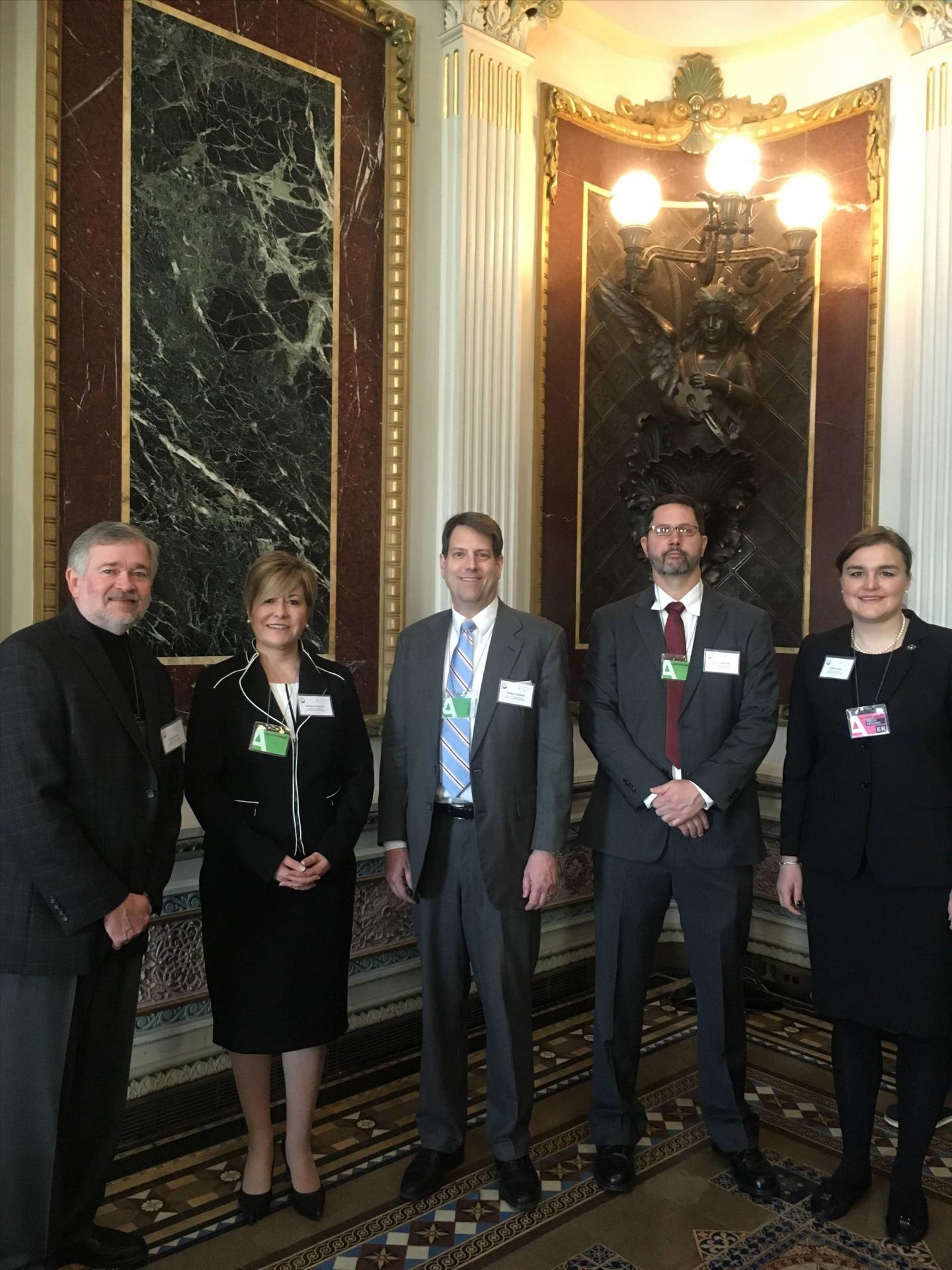
Credit: Ioana Danciu, Oak Ridge National Laboratory
A team of researchers from the Department of Energy’s Oak Ridge National Laboratory Health Data Sciences Institute have harnessed the power of artificial intelligence to better match cancer patients with clinical trials.
The researchers were one of ten teams to develop a digital tool to address complex challenges relevant to medical conditions such as cancer and Lyme disease as part of The Opportunity Project (TOP) Health Sprint, a 14-week effort sponsored by the Census Bureau, coordinated by the Department of Health and Human Services, and led by two Presidential Innovation Fellows.
The TOP tools rely on emerging technologies and were built using open data from governmental agencies such as the National Cancer Institute (NCI) and the Department of Veterans Affairs. The sprint was intended to strengthen collaborations between technologists, issue experts, and community leaders to address real-world challenges and improve patient lives.
“One of the major obstacles facing cancer trial eligibility is the unstructured nature of the data,” said ORNL Team Lead Ioana Danciu. “Artificial intelligence and natural language processing tools refine and advances the process of matching cancer patients to promising clinical trials.”
The team, which includes Health Data Sciences Institute Director Georgia Tourassi and ORNL researchers Blair Christian and Shamimul Hasan, developed a novel knowledge graph that presents information in a way that tools can be constructed to extract meaningful information from vast reams of unstructured text.
By applying unsupervised machine learning and large-scale graph analytic methodologies, approaches similar to what Netflix uses to recommend programs and movies to customers, the team aims to find clinical trials with related goals.
ORNL’s “SmartClinicalTrials” capability builds upon an existing NCI-DOE collaboration in which ORNL researchers lead a pilot effort to expand cancer surveillance capabilities and build statistical models capable of predicting the clinical course and outcomes for different types of cancer.
The TOP team added clinical trial data to an exascale knowledge graph that connects data from disparate sources such as electronic health records, medical ontologies, and public datasets. “These tools make it possible to store the information and continuously add new information in a manner that allows for computational analysis and knowledge discovery down the road,” Danciu said.
“Through the Health Data Sciences Institute, ORNL is building scientific capabilities to address nationally relevant problems in biomedical science and the healthcare delivery space,” said Tourassi. “Exercises such as the TOP sprint allow us to have a focused problem on which to catalyze research while simultaneously showing the power of cross-agency collaboration in enabling new insights from government data. This sprint illustrated that to democratize science, accelerate discovery, and create a useful product for the cancer community, we need a collaboration that unites open healthcare data, domain expertise and compute resources.”
The research was also informed and enabled by ORNL’s AI Initiative, which harnesses the laboratory’s unique suite of expertise, compute capabilities, and user facilities to accelerate scientific breakthroughs and enhance national security.
The Initiative has already demonstrated new capabilities in materials science, engineering design, accelerated learning, and scalability. For example, ORNL researchers have shown that machine learning algorithms can be used to extract information from signals with low signal-to-noise ratios; developed algorithms capable of accelerating modeling and simulation with very little training data; and designed novel biomimetic neuromorphic devices capable of detecting epileptic seizures.
“ORNL’s investment in AI, together with its expertise in science, computing, and engineering and its world-class facilities, positions the lab to continue its leadership in science and national security,” said ORNL’s Director of Artificial Intelligence Program David Womble.
The TOP team’s work represents the first “health challenge” issued under the Census Bureau-Department of Health and Human Services partnership and is a demonstration of ORNL’s AI capability in the space of health data science.
“This was an exploratory project,” said Danciu. “Ultimately, we are interested in unleashing the power of the unique computing resources and data science expertise available within ORNL to find end-to-end solutions to big problems with broad societal impact, and clinical trial patient matching certainly fits that description.”
She added that other challenge participants were large commercial companies, and the team would like to collaborate with industry to further realize the potential of AI in revolutionizing cancer trials, and cancer management more broadly.
“Being able to draw from ORNL’s pool of scientific expertise and build on existing research pieces to enable progress highlights the imperative nature of the local, federal, and global AI initiatives,” Tourassi said.
###
ORNL is managed by UT-Battelle for the Department of Energy’s Office of Science, the single largest supporter of basic research in the physical sciences in the United States. DOE’s Office of Science is working to address some of the most pressing challenges of our time. For more information, please visit https:/
Media Contact
Scott Jones
[email protected]
Original Source
https:/



